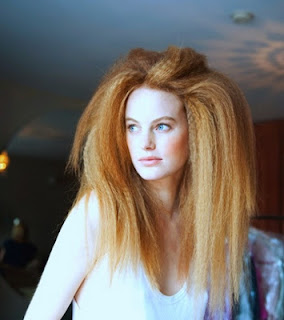I have never actually paid much attention to the white balance setting on my camera before, and as I now have the new camera I decided that now is probably the time to research more about it and make full use of the setting.
White balance (WB) is the practice of removing unrealistic colour casts, so that items that look white in person are shown as white in your photograph. White balance must take into consideration the "colour temperature" of the source of the light. This refers to the comparative warmth or coolness of white light. Our eyes are good ar judging what is white under different sources of light, but digital cameras often have difficulty with auto white balance (AWB) and this can create blue, orange or green colour casts. It is based on the ratio of the amount of blue light to the amount of red light, and the green is ignored. The unit for measuring this ratio is in degree Kelvin (K). A light with higher colour temperature has "more" blue light than a light with lower colour temperature. Therefore, a cooler light has a higher colour temperature. The following table shows the colour temperature of some light sources.
White balance (WB) is the practice of removing unrealistic colour casts, so that items that look white in person are shown as white in your photograph. White balance must take into consideration the "colour temperature" of the source of the light. This refers to the comparative warmth or coolness of white light. Our eyes are good ar judging what is white under different sources of light, but digital cameras often have difficulty with auto white balance (AWB) and this can create blue, orange or green colour casts. It is based on the ratio of the amount of blue light to the amount of red light, and the green is ignored. The unit for measuring this ratio is in degree Kelvin (K). A light with higher colour temperature has "more" blue light than a light with lower colour temperature. Therefore, a cooler light has a higher colour temperature. The following table shows the colour temperature of some light sources.
All values are approximate. We see white paper as white paper regardless of whether it is viewed under strong sunlight or in a room lit with incandescent lights. Digital cameras usually have built in sensors to measure the current colour temperature and use algorithm to process the image so that the final result may be close to what we see. The algorithm that is being used may not be accurate enough to be correct every time. Under some difficult situations when the camera algorithm is not able to set the colour temperature correctly or when some creative effects are required, the camera can then be instructed to use a certain colour temperature to meet our needs. The adjustment which makes sure that the white colour we directly view will also look white in the image is referred to as white balance. Not setting the white balamce correctly may cause a colour shift in the image. I am hoping now that as I have a better understanding of white balance, I will be less afraid of experimenting as I become more familiar with my cameras photographic settings. Info from wikipedia Nikon d90 manual |







